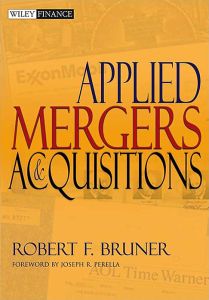Join getAbstract to access the summary!

Join getAbstract to access the summary!
Robert F. Bruner
Applied Mergers and Acquisitions
Wiley, 2004
What's inside?
This comprehensive textbook on M&A covers valuation, legalities, deal structures, ethics, accounting, integration and more.
Recommendation
getAbstract suspects that this comprehensive text by Robert F. Bruner, one of the leading academic authorities on mergers and acquisitions (M&A), will prove nearly indispensable to any student or executive seeking a thorough introduction to the subject. Much of what has been written about M&A reflects a bias toward or against deals, oversimplifies, ignores important facts or promotes the business of an advisory firm. Bruner, however, addresses M&A with both scholarly objectivity and an appreciation for practical realities. His discussion of whether M&A deals on the whole create or destroy value raises points that seem to have eluded the attention of many economists. At the same time, he is quite aware of the limits of economic analysis, and gives appropriate emphasis to psychological and behavioral dimensions.
Summary
About the Author
Robert F. Bruner is distinguished professor of business administration and executive director of the Batten Institute at the Darden Graduate School of Business Administration, University of Virginia. He directs the executive education program on mergers and acquisitions.

















Comment on this summary